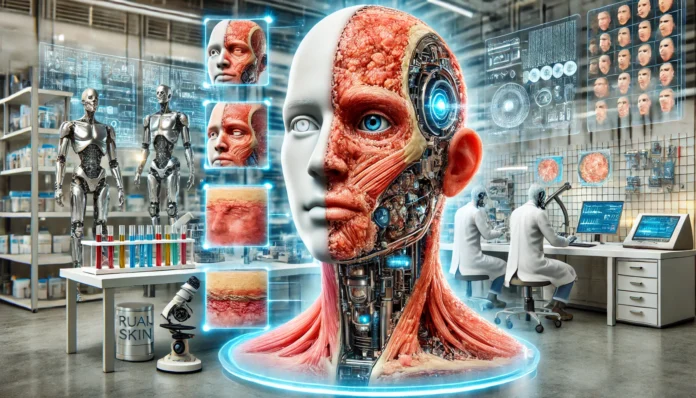Researchers at the University of Tokyo have developed robots with faces covered in real human skin, capable of healing, sweating, and even tanning. This breakthrough aims to enhance human-robot interaction and prosthetics.
Scientists Create Lifelike Robotic Faces with Real Human Skin
Introduction
Tokyo researchers have achieved a significant milestone by creating robotic faces covered with real human skin. This innovation bridges the gap between artificial and biological systems, opening up new possibilities for robotics and prosthetics.
The Technology
The process uses perforation-type anchors, inspired by human skin’s natural attachment, allowing living tissue to bond securely to the robot’s surface. The skin is grown from human dermal fibroblasts and keratinocytes, cultured in collagen and growth media.
Applications
This technology is not just about aesthetics; it aims to make robots more interactive and relatable. Potential applications include realistic prosthetics and robots that can seamlessly integrate into human environments, providing empathetic and natural interactions.
Challenges and Solutions
Creating a stable bond between living tissue and robotic surfaces involves overcoming significant technical challenges, such as ensuring proper tissue growth and anchor strength. The researchers used plasma treatment to enhance tissue compatibility and conducted simulations to optimize anchor design.
Why This Is Important
This development could revolutionize fields like healthcare and customer service by enabling robots to interact more naturally with humans. It also represents a step towards more lifelike and functional prosthetic limbs, improving the quality of life for users.
Possible Implications
- Enhanced Human-Robot Interaction: More natural and empathetic interactions.
- Advanced Prosthetics: Realistic prosthetic limbs with skin-like properties.
- Ethical Considerations: Raises questions about the use and regulation of lifelike robots.
- Future Innovations: Potential for incorporating sensory capabilities and further improving the durability and functionality of living skin on robots.
What to Follow
- Technological Advancements: Ongoing improvements in the durability and functionality of living skin for robots.
- Ethical Discussions: Debates around the ethical implications of creating lifelike robots.
- Practical Applications: Real-world implementations and feedback from industries using this technology.
What Would Happen Next If This Was a Sci-Fi Movie
In a sci-fi scenario, these lifelike robots could become indistinguishable from humans, leading to a society where robots perform a wide range of tasks, from caregiving to complex social interactions. This could spark debates about the rights and roles of robots in human society and their impact on employment and ethics.
Conclusion
The development of lifelike robotic faces with real human skin marks a significant advance in robotics. This technology holds the promise of transforming various fields by making robots more interactive and relatable. As research continues, we can expect further innovations that bring us closer to seamlessly integrating robots into our daily lives.
Source: Fox News


